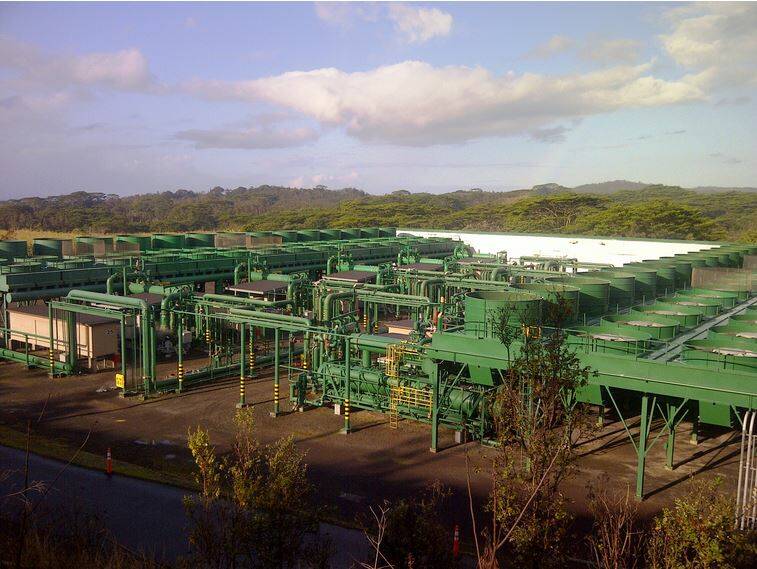Puna Geothermal Venture has scheduled a public meeting tonight to discuss its plan to increase power production.
PGV seeks to up its energy output in two phases — from 38 megawatts to 46 megawatts and, eventually, to 60 megawatts.
Tonight’s meeting at the Pahoa Neighborhood Facility will begin with an informational open house from 5 p.m. to 5:45 p.m. Introductory remarks are scheduled from 5:45 p.m. to 6 p.m. Comments will be taken from in-person and online participants from 6 p.m.to 8 p.m.
Those unable to attend in person will be able to participate in the meeting online by going to punageothermalproject.com and registering to participate via Zoom.
The geothermal power plant near Pahoa proposes to replace the current 12 operating power-generation units with up to four energy converters.
According to an environmental impact statement preparation notice published July 23, the so-called “Repower Project” would increase the production of renewable energy at the existing facility by using new, more efficient units on a smaller land footprint compared to the existing units. The overall property size would remain the same.
Most of the existing infrastructure and buildings would remain for the project, including administration buildings, the control room, maintenance areas, well pads and gathering system.
The proposed new units, according to the preparation notice, would continue to safely supply reliable power from renewable geothermal resources with more efficient and quieter equipment.
Under a recent new interpretation of statutory definitions of “land” by the state Public Utilities Commission, the heat extracted from the geothermal fluid beneath the site, a resource to which the state claims title, is state “land,” so the project’s continued use of the geothermal resource triggers environmental review.
County Planning Director Zendo Kern made the determination that an EIS is required.
Permits needed for the work are a building permit and a grubbing and grading permit from the county Planning Department and an air-pollution control permit from the state Department of Health.
The consultant submitting the EIS preparation notice is Stantec Consulting Services Inc. of Hilo.
PGV went online in 1993 with a generating capacity of 25 megawatts. The power plant, owned and operated by Ormat Technologies, had a generating capacity of 30 megawatts in May 2018 when lava from the lower East Rift Zone eruption of Kilauea volcano inundated a portion of the property and disabled the complex’s power substation.
The damaged facilities were restored, and on Nov. 5, 2020, the production of electricity resumed at a lower output level. PGV continued geothermal field recovery work to increase the production of energy, and the facility currently produces approximately 25.7 megawatts, according to the notice document.
Since the previous power purchase agreement with Hawaiian Electric Co. was set to expire on Dec. 31, 2027, PGV proposed the upgrade to more efficient equipment and to make associated improvements to the original facility.
PGV and Hawaiian Electric reached an agreement about the amended restated power purchase agreement, which would extend the term until 2052, increase capacity of the geothermal plant to 46 megawatts, and cease linking energy pricing to oil costs.
The power purchase agreement was filed with the PUC for its review and approval on Dec. 31, 2019. The PUC suspended review of the power purchase agreement on March 31, 2021, pending Ormat’s submission of a supplemental EIS pursuant to state environmental law. However, the PUC declined to be the accepting authority for any environmental review.
According to the notice document, the accepting authority for the EIS is the county Planning Department.
Mike Kaleikini, PGV’s senior director of Hawaiian affairs, did not respond for comment as of press-time Tuesday.
Email John Burnett at jburnett@hawaiitribune-herald.com.

